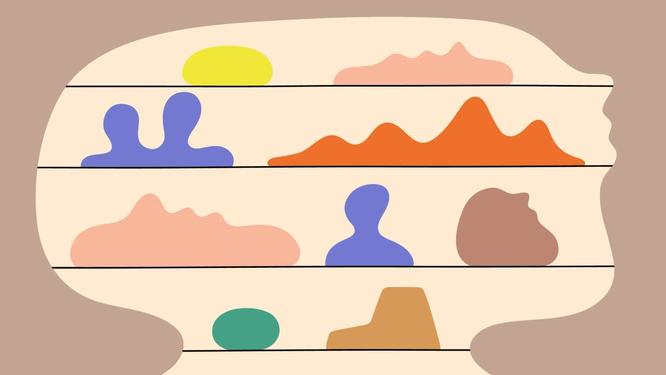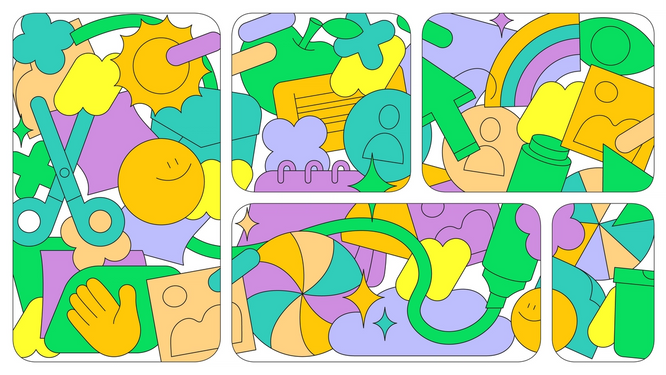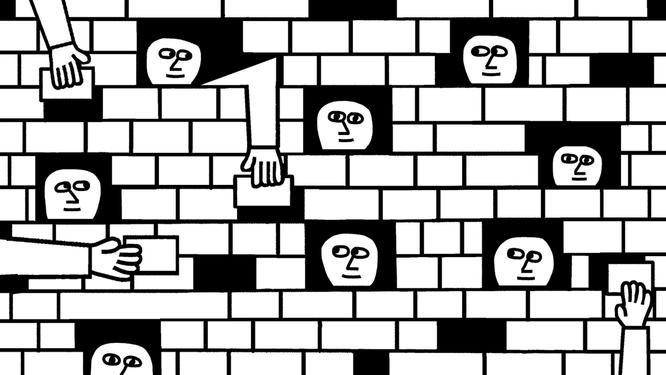

Introducing Shortcut letter from the editor | Figma Blog
source link: https://www.figma.com/blog/introducing-shortcut-letter-from-the-editor/?ref=sidebar
Go to the source link to view the article. You can view the picture content, updated content and better typesetting reading experience. If the link is broken, please click the button below to view the snapshot at that time.

Introducing Shortcut, Figma’s new blog
Every product has a story. Often, that story unfolds in Figma. Shortcut’s mission is to tell stories about people, and the priorities, plans, and pivots they discover along the path of bringing new ideas to life.
*Often attributed to Plato.
They say, “You can discover more about a person in an hour of play than in a year of conversation.”* Because no two people play the same game in exactly the same way, games act as a shortcut for understanding and cooperation. Games help us make sense of ourselves in the world, and the way we play them helps us make sense of each other. For example, the more we play a game, the more likely we are to make modifications or develop shortcuts—so-called “house rules”—small changes that enhance our experience, accommodate different players tastes or needs, or simply make the game more fun. Figma has understood the power of play from the start. We were born on the web, born multiplayer, and our evolution as a product and company has always depended on our users' style, behaviors, and predilections.
As Figma co-founder, Evan Wallace, explains it:
“At the time [2015]… no one was clamoring for a multiplayer design tool—if anything, people hated the idea. Designers worried that live collaborative editing would result in ‘hovering art directors’ and ‘design by committee’ catastrophes.” (link)
Telling stories about how our team and our community bring multiplayer design to life everyday is core to our brand. Stories like “How Linear made the most of a DDoS” and “When fonts fall” peel back the layers to bring to life how that work happens and what it means to care deeply about process and craft. When we set about redesigning the experience on our blog earlier this year, we wanted that spirit of discovery and sharing to be front and center. Where our content experience felt static or one directional—not unlike the static design files we upended with multiplayer—we wanted the new experience to feel more immersive and alive.
 An illustration for our Best Teams campaign by Lennard Kok
An illustration for our Best Teams campaign by Lennard Kok- A screen capture of the tags functionality on Shortcut
 Illustration for our Future of Design Systems series by Andreas Samuelsson
Illustration for our Future of Design Systems series by Andreas Samuelsson- Motion study by Mathieu Labrecque
 Illustration for Behind the feature: Find and replace by Martina Paukova
Illustration for Behind the feature: Find and replace by Martina Paukova- Shortcut's elevated Categories pages in action
 An illustration for "Roles not Rules" by Marcus Oakley
An illustration for "Roles not Rules" by Marcus Oakley An illustration for our Best Teams campaign by Lennard Kok
An illustration for our Best Teams campaign by Lennard Kok- A screen capture of the tags functionality on Shortcut
 Illustration for our Future of Design Systems series by Andreas Samuelsson
Illustration for our Future of Design Systems series by Andreas Samuelsson- Motion study by Mathieu Labrecque
We revamped our category navigation and readers can now sort by topic (like design systems or engineering), as well as special collections. We also worked with a slew of talented illustrators to create new artwork for the blog, including Andreas Samuelsson, Lennard Kok, Marcus Oakley, Martina Paukova, Matthieu Labrecque, and Rose Wong—as well as writers like Rebecca Ackermann and Suzanne LaBarre. If you're interested in collaborating, email editorial[at]figma.com. 😎
Ten years in, it’s almost hard to remember that making design multiplayer once felt like a risk, but opening up the canvas to new people, disciplines, and ideas has offered endless possibilities. Shortcut seeks to model the philosophy of input for output—where one idea leads to another, and inspiration is bi-directionally. We hope that the new site experience not only encourages readers to do more, but also compels us as writers, designers, engineers, product teams, and makers to share ideas and have more fun. We want people to feel what’s possible in Figma, in this community, whether through a curated collection about the Future of Design Systems, or an opinion piece about the future of product design and development, or even a technical deep dive about the inspiration our backend engineers take from the gaming industry. In short, we want people to discover things
they didn’t know they were looking for.Shortcut seeks to model the philosophy of input for output—where one idea leads to another, and inspiration works bi-directionally.“ Shortcut seeks to model the philosophy of input for output—where one idea leads to another, and inspiration works bi-directionally. ”
“Knowledge which is acquired under compulsion obtains no hold on the mind,”—Plato: The Republic, Book VII
The more people we invite into our world, the richer the experience becomes. We get to make up the rules as we go. And while it may be true that an hour of play tells you more about a person than a year of conversation, we hope that Shortcut encourages you to do both. Because just going through the motions won’t get us closer to the next big idea, but getting more people in the game just might.
[Your move.]

Amber Bravo is a Brooklyn-based writer and editor with previous experience at Google Design, Herman Miller, The FADER, and Dwell Magazine.
Recommend
About Joyk
Aggregate valuable and interesting links.
Joyk means Joy of geeK
